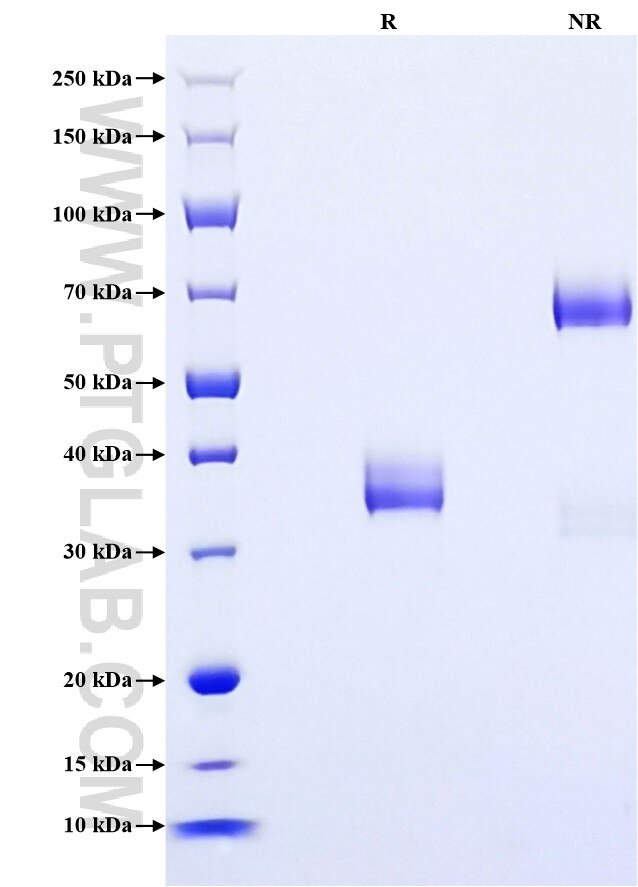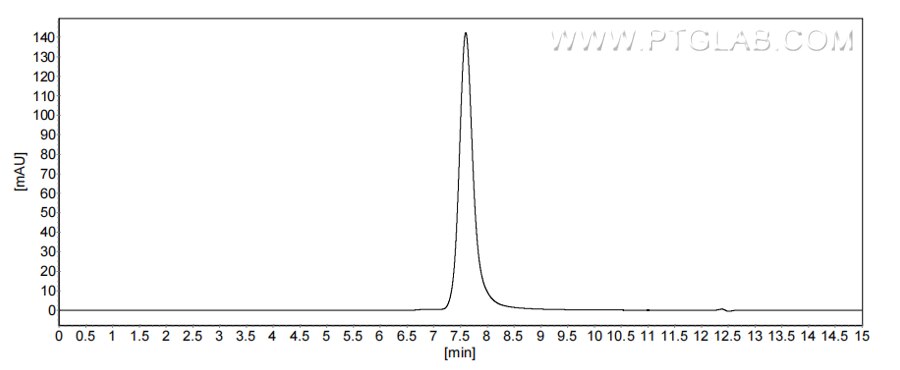Recombinant Mouse CXCL2 protein (rFc Tag) (HPLC verified)
Species
Mouse
Purity
>90 %, SDS-PAGE
>90 %, SEC-HPLC
Tag
rFc Tag
Activity
not tested
Cat no : Eg2239
Validation Data Gallery
Product Information
| Purity | >90 %, SDS-PAGE >90 %, SEC-HPLC |
| Endotoxin | <0.1 EU/μg protein, LAL method |
| Activity |
Not tested |
| Expression | HEK293-derived Mouse CXCL2 protein Ala28-Asn100 (Accession# P10889) with a rabbit IgG Fc tag at the N-terminus. |
| GeneID | 20310 |
| Accession | P10889 |
| PredictedSize | 35.0 kDa |
| SDS-PAGE | 34-38 kDa, reducing (R) conditions |
| Formulation | Lyophilized from 0.22 μm filtered solution in PBS, pH 7.4. Normally 5% trehalose and 5% mannitol are added as protectants before lyophilization. |
| Reconstitution | Briefly centrifuge the tube before opening. Reconstitute at 0.1-0.5 mg/mL in sterile water. |
| Storage Conditions |
It is recommended that the protein be aliquoted for optimal storage. Avoid repeated freeze-thaw cycles.
|
| Shipping | The product is shipped at ambient temperature. Upon receipt, store it immediately at the recommended temperature. |
Background
CXCL2, also known as macrophage inflammatory protein 2-alpha (Mip2-alpha), is a member of CXC chemokine family that binds to CXC chemokine receptor 2 (CXCR2). CXCL2 is mainly produced by macrophages, endothelial cells, epithelial cells and tumor cells. CXCL2 plays important roles in various biological progresses such as angiogenesis, inflammation, immune response and cancer biological behaviors. Under inflammatory conditions in CNS, microglia and astrocytes may secrete CXCL2 as well as other chemokines, which induces chemotaxis and infiltration of circulatory neutrophils. Indeed, previous studies suggest that CXCL2 is involved in Alzheimer disease, multiple sclerosis and brain ischemia.
References:
1. Vansaun MN. et al. (2013). PLoS One. 8(9):e73054. 2. Jablonska J. et al. (2014). Int J Cancer. 134:1346-58. 3. Oue E. et al. (2012). Biochem Biophys Res Commun. 424:456-461. 4. Haraguchi K. et al. (2012). J. Neurosci.32:3931-3941. 5. L. Bozoyan. et al. (2015). J. Neuroinflammation. 12:173. 6. Hosking MP. et al. (2010). PLoS One. 5(6):e11340.


